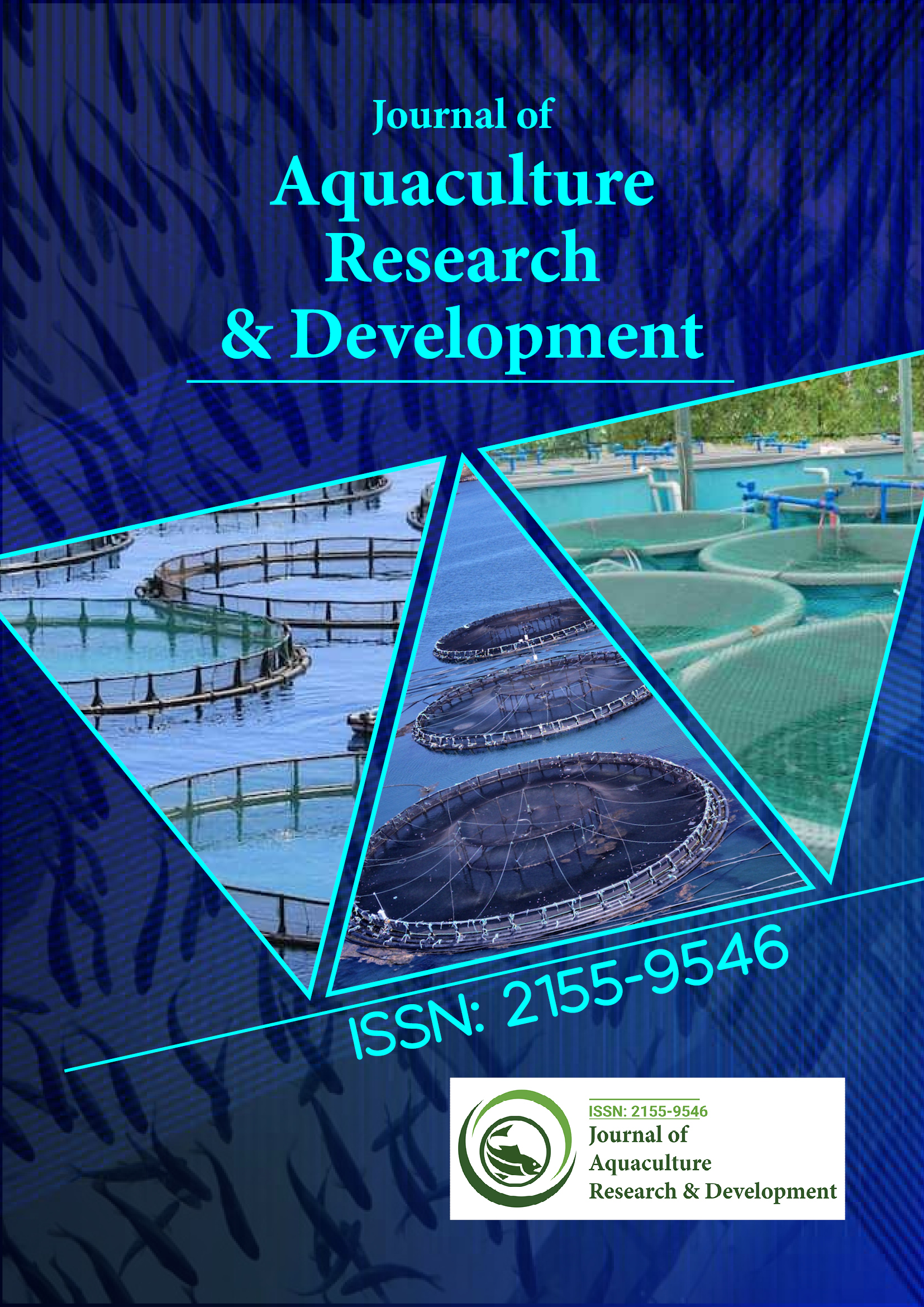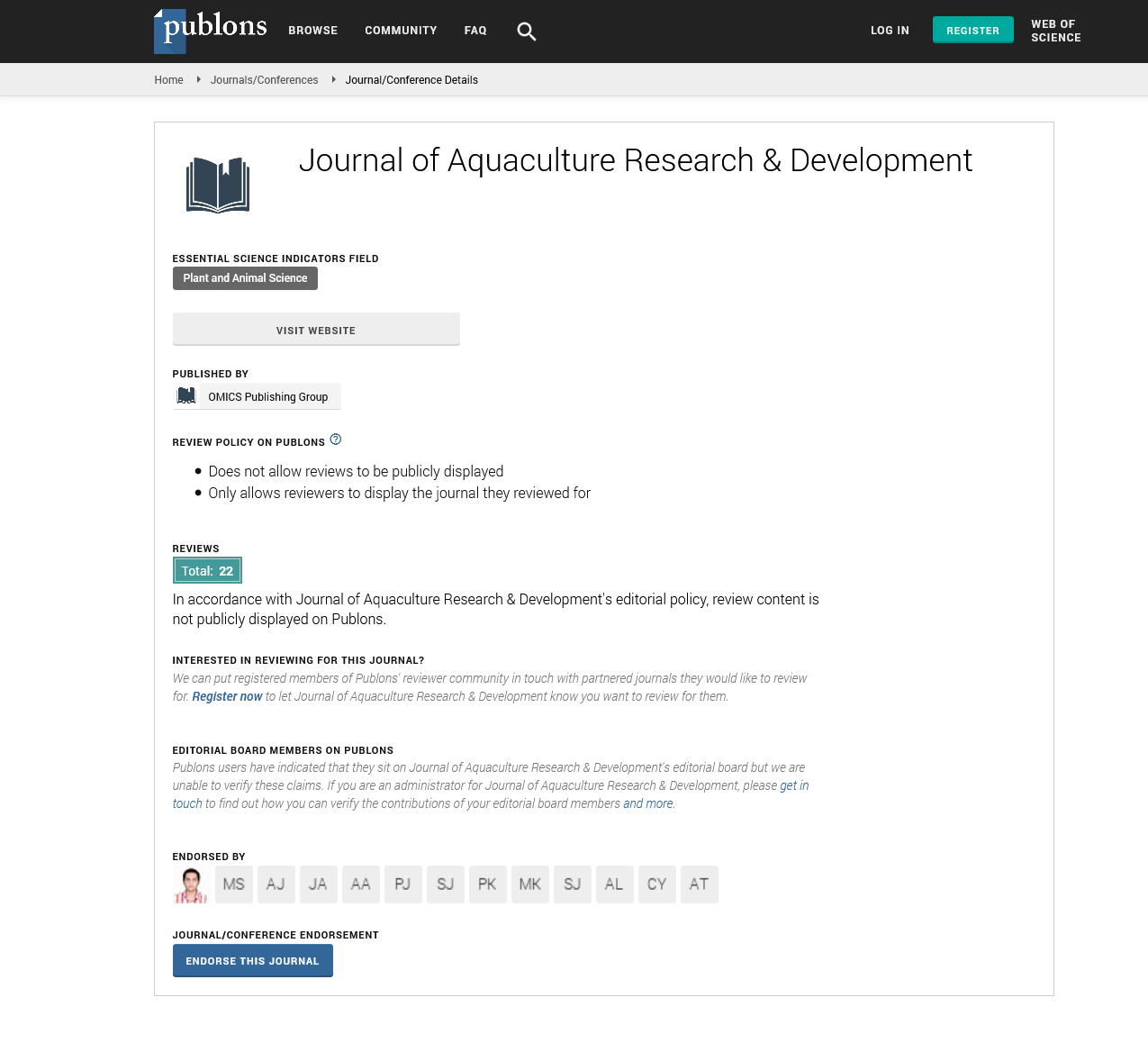Indexed In
- Online Access to Research in the Environment (OARE)
- Open J Gate
- Genamics JournalSeek
- JournalTOCs
- Scimago
- Ulrich's Periodicals Directory
- Access to Global Online Research in Agriculture (AGORA)
- Electronic Journals Library
- Centre for Agriculture and Biosciences International (CABI)
- RefSeek
- Directory of Research Journal Indexing (DRJI)
- Hamdard University
- EBSCO A-Z
- OCLC- WorldCat
- Scholarsteer
- SWB online catalog
- Virtual Library of Biology (vifabio)
- Publons
- MIAR
- University Grants Commission
- Euro Pub
- Google Scholar
Useful Links
Share This Page
Journal Flyer

Open Access Journals
- Agri and Aquaculture
- Biochemistry
- Bioinformatics & Systems Biology
- Business & Management
- Chemistry
- Clinical Sciences
- Engineering
- Food & Nutrition
- General Science
- Genetics & Molecular Biology
- Immunology & Microbiology
- Medical Sciences
- Neuroscience & Psychology
- Nursing & Health Care
- Pharmaceutical Sciences
Short Communication - (2025) Volume 16, Issue 6
Amino Acid Dynamics and Protein Metabolism in Senegal Sole Post-Larvae
Marianne Cueto*Received: 26-May-2025, Manuscript No. JARD-25-29770 ; Editor assigned: 28-May-2025, Pre QC No. JARD-25-29770 (PQ); Reviewed: 11-Jun-2025, QC No. JARD-25-29770 ; Revised: 18-Jun-2025, Manuscript No. JARD-25-29770 (R); Published: 25-Jun-2025, DOI: 10.35248/2155-9546.25.16.997
Description
The Senegal sole (Solea senegalensis) has become an important species in aquaculture due to its commercial value, adaptability to captivity and consumer demand in Southern Europe. Despite progress in larval rearing techniques, survival and growth during the post-larval stage remain key factors limiting large-scale production. One area of active investigation is the role of amino acids in supporting growth, tissue differentiation and metabolic regulation during this sensitive stage. Amino acids serve not only as structural units of proteins but also as regulators of biochemical pathways, signaling molecules and substrates for energy metabolism.
In fish nutrition, amino acids are broadly classified as indispensable (essential) and dispensable (non-essential). Indispensable amino acids cannot be synthesized at sufficient rates and must be supplied through the diet, whereas dispensable amino acids can be synthesized internally but still play important roles in physiology. The balance between assimilation and catabolism of these two groups determines growth efficiency, nitrogen retention and metabolic health in post-larval fish.
Amino acid requirements in Senegal sole
Like other marine fish, Senegal sole exhibits distinct amino acid requirements that differ from freshwater species due to evolutionary adaptations to its environment. Indispensable amino acids for this species include lysine, methionine, threonine, valine, leucine, isoleucine, tryptophan, phenylalanine, histidine and arginine. Dispensable amino acids such as glutamate, aspartate, glycine, alanine and serine, while not strictly required from the diet, are metabolically significant [1-3].
During the post-larval stage, protein synthesis rates are particularly high due to muscle development, organ differentiation and the establishment of functional digestive and immune systems. Consequently, the efficiency with which free amino acids are assimilated and metabolized directly influences growth outcomes [4-7].
Intestinal uptake
The intestine of post-larval Senegal sole contains transporters specialized for amino acid absorption. These transporters exhibit selectivity, with some designed for neutral amino acids, others for acidic or basic types. Peptide transporters also facilitate the uptake of small di- and tri-peptides, which are then hydrolyzed to free amino acids intracellularly. The efficiency of these transporters is critical, as post-larvae have relatively immature digestive systems compared to juveniles.
Incorporation into proteins
Once absorbed, indispensable amino acids are primarily directed toward protein synthesis in muscle, gills and liver. High rates of myofibrillar protein deposition are characteristic of this stage, supporting growth and skeletal muscle development. Dispensable amino acids, on the other hand, serve as donors of carbon skeletons or as precursors for other biomolecules. For example, glutamate is a central substrate for the synthesis of other amino acids through transamination [8-10].
Nutritional modulation
Diets rich in indispensable amino acids promote protein synthesis but may increase catabolic losses if provided in unbalanced proportions. For example, an excess of one amino acid may lead to oxidative deamination of the surplus while limiting growth if another indispensable amino acid is deficient. Therefore, providing an optimal amino acid profile is essential for maximizing assimilation efficiency.
Environmental influence
Temperature, oxygen availability and salinity can affect amino acid metabolism. Higher temperatures increase metabolic rates, leading to greater amino acid catabolism for energy. Conversely, under hypoxic conditions, certain amino acids such as alanine accumulate as part of anaerobic metabolism. For Senegal sole, which are benthic and adapted to variable conditions, these adjustments are critical for survival.
Conclusion
In post-larval Senegal sole, the assimilation and catabolism of free amino acids form the foundation of growth, energy metabolism and survival. Indispensable amino acids are essential for protein synthesis and tissue development, while dispensable amino acids contribute to metabolic flexibility and energy balance. The interplay between assimilation and catabolism ensures that amino acid supply is matched with physiological demand, a process finely tuned by nutrition and environmental conditions.
For aquaculture, understanding these processes provides a pathway toward improved feed efficiency, enhanced larval performance and reduced environmental impact. Continued research on amino acid metabolism in Senegal sole will strengthen the biological basis for sustainable production and help secure the future of this valuable species in European aquaculture.
References
- Acosta-Alba I, Nicolay G, Mbaye A, Deme M, Andres L, Oswald M, et al. Mapping fisheries value chains to facilitate their sustainability assessment: Case studies in The Gambia and Mali. Mar Policy. 2022;135:104854.
- Jaiswal S, Rasal KD, Chandra T, Prabha R, Iquebal MA, Rai A, et al. Proteomics in fish health and aquaculture productivity management: Status and future perspectives. Aquaculture. 2023;566:739159.
- Groover EM, Alo MM, Ramee SW, Lipscomb TN, Degidio JM, DiMaggio MA. Development of early larviculture protocols for the melanurus wrasse Halichoeres melanurus. Aquaculture. 2021;530:735682.
- Rothschild C, Aflalo ED, Kedem I, Farjon G, Yitzhaky Y, Sagi A, et al. Computer vision system for counting crustacean larvae by detection. Smart Agric Technol. 2023;5:100289.
- Colombo GM, dos Santos Simiao C, Ramirez JR, de Sousa Araujo AC, Gomes RM, Buitrago SA, et al. Bioflocs enriched with lyophilized acai (Euterpe oleracea) improved the survival and weight gain of Litopenaeus vannamei post-larvae cultivated in the BFT system. Aquaculture. 2023;566:739230.
- Frandsen RP, Krag LA, Herrmann B. The challenge of harvesting common sole (Solea solea) in highly selective trawl fisheries. J Sea Res. 2024;202:102550.
- Yang F, Benini E, Sorensen SR, Albertsen CM, Kottmann J, Butts IA, et al. European eel larvae are sensitive to vibration and light. Aquaculture. 2025;606:742569.
- Reinoso S, Gutierrez MS, Dominguez-Borbor C, Arguello-Guevara W, Bohorquez-Cruz M, Sonnenholzner S, et al. Selection of autochthonous yeasts isolated from the intestinal tracts of cobia fish (Rachycentron canadum) with probiotic potential. J Fungi. 2023;9(2):274.
- Huang AT, Alter K, Polte P, Peck MA. Maternal, temperature, and seasonal effects on yolk-sac larvae of Atlantic herring Clupea harengus in the western Baltic Sea. J Exp Mar Biol Ecol. 2025;589:152109.
- Lin W, Gao Y, Wang Q, Xiao Z, Huang GH. Ascovirus suppresses feeding and growth in Spodoptera litura larvae by targeting the neuropeptide F. J Asia Pac Entomol. 2025:102458.
Citation: Cueto M (2025). Amino Acid Dynamics and Protein Metabolism in Senegal Sole Post-Larvae. J Aquac Res Dev. 16:997.
Copyright: © 2025 Cueto M. This is an open-access article distributed under the terms of the Creative Commons Attribution License, which permits unrestricted use, distribution, and reproduction in any medium, provided the original author and source are credited

